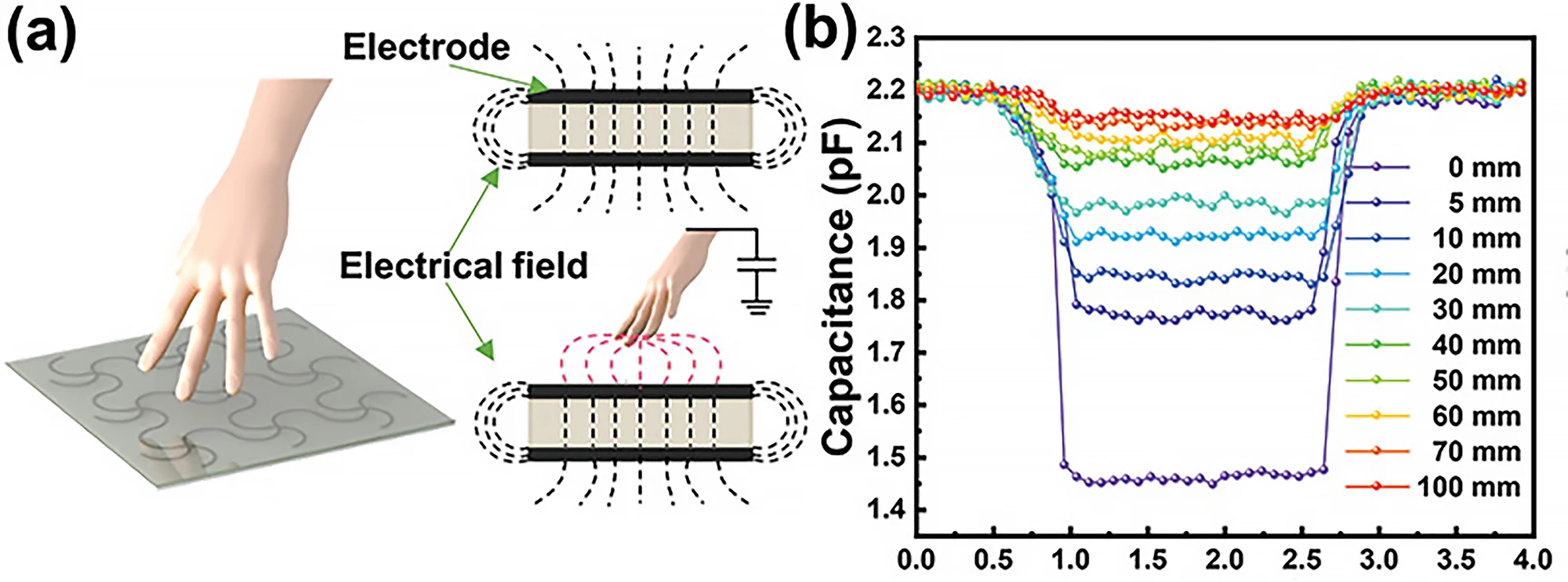Using a 3D-printed material sensitive to electric fields, researchers have created a novel sensor that can accurately recognize and distinguish objects up to 10 centimeters – about four inches – away without needing to touch them physically. The touchless touch sensor could provide a new level of sensitivity to human-like robotics.
The past few years have seen significant progress in producing electronics that can bend, twist, and fold, resulting in a wide range of functional wearable devices. Understandably, integrating next-level touch sensors into electronic human skin has become a key consideration, with the potential for use across robotics, health, and tech.
Electronic skin with integrated touchless sensing technology could benefit many. Being able to wave a finger or gesture to launch software, for example, would be very convenient – especially for people who can’t physically hold a device. Or, people with visual disabilities would be able to navigate around obstacles safely. This functionality could extend, of course, to any device connected to the Internet of Things (IoT).
Most current touch sensors rely on touching an object directly to create a measurable physical deformation and corresponding force in the sensor. However, with a new study by researchers from Qingdao University, China, we may have come one step closer to contactless sensing. They’ve developed a touch sensor that’s so sensitive it works without direct contact between it and the object being detected.
“To bring greater sensitivity and versatility, we have developed new composite films with surprising and very useful electrical properties,” said Xinlin Li, one of the study’s corresponding authors.
To create their composite films, the researchers combined small amounts of graphitic carbon nitride (GCN) with polydimethylsiloxane (PDMS) 3D-printed into a grid. Surprisingly, they found that combining these two materials with a high dielectric constant – a measure of the ability to store electric energy in an electrical field – resulted in a material with a low dielectric constant and, therefore, a sensor more sensitive to electric fields.

Testing the grid’s capabilities using their own fingers as the objects being detected, the researchers found that the grid sensed the fingers between 0.5 and 10 cm (0.2 to 3.9 in) away and didn’t need to be touched physically, clearly identifying the finger as a 3D object. Testing it on a circular table and a trigonal prism, the sensor could accurately recognize and distinguish different shapes and motions.
“The performance was outstanding in terms of sensitivity, speed of response and robust stability through many cycles of use,” Li said. “This opens new possibilities in the field of wearable objects and electronic skin.”
Following the successful performance of their sensors, the researchers integrated them into a printed circuit board to create a unified system capable of remotely monitoring human motion. Electronic skin containing the novel sensors is affixed to the wrist, ensuring a continuous connection with a device dedicated to capturing and wirelessly transmitting the 3D shape of objects to smartphones, smartwatches, and computers in real-time using 4G technology.
The researchers plan to refine the sensing technology with a view to mass-producing it. They’ll also explore possibilities beyond detecting shape and movement.
The study was published in the journal Science & Technology of Advanced Materials.
Source: ACN Newswire






